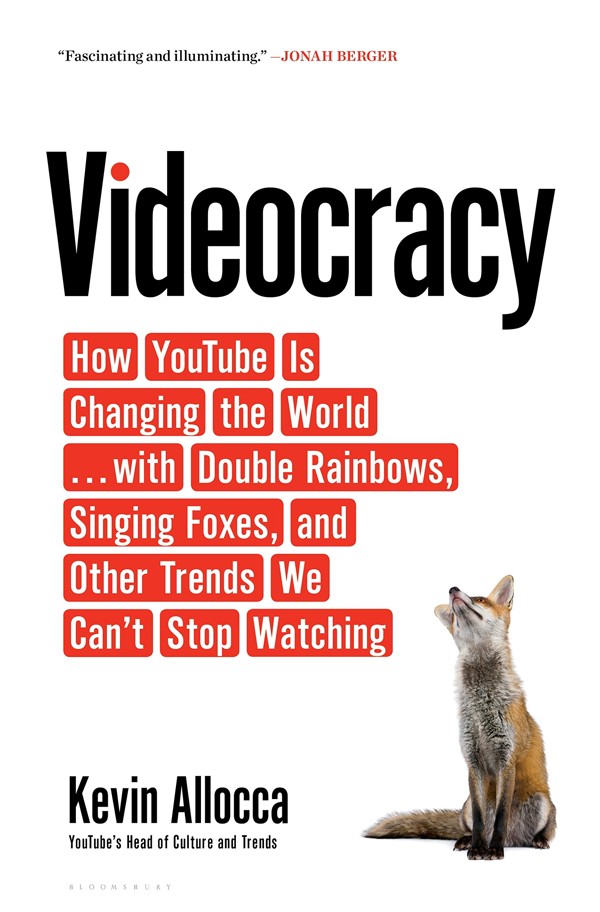
Book review: Videocracy – YouTube’s head of culture and trends Kevin Allocca shares his views on YouTube phenomenon
Kevin Allocca’s book delves into the power of YouTube, looking at its history, how it has evolved new forms of expression, its value as a library of practical lessons. It does, however, gloss over the darker side of the video sharing website

by Kevin Allocca
Bloomsbury
3/5 stars
The most infuriating consequence of broadband internet is that people now consider it acceptable to send each other links to YouTube videos of people talking about things, rather than links to articles in which these things are explained. Compared with prose, video is a terrible way of transmitting ideas. Kevin Allocca, YouTube’s “head of culture and trends”, claims in his new book, Videocracy, that YouTube is “the largest database of culture in the history of humanity”. In terms of sheer gigabytes, it may be true, but you don’t have to be a fusty old bibliophile to suspect that, say, the Library of Congress might be vastly superior. If aliens wanted to understand humanity, Allocca says, he’d give them YouTube. God help us all.

But of course “culture” ain’t what it used to be (it never is). Allocca’s book is breezy and packed with stories about fun viral videos, plus a lot of tech clichés about the virtues of “sharing” and “interacting” and “participating” and so on. He is right, though, to point out that YouTube is the home for some truly new forms of expression.
It’s not all films of dogs on skateboards; there are comedy video game commentators, unexpected musical cover-version artists, people who make “supercuts” of, say, the way a weather presenter announces a certain word, or “ASMRtists”, who whisper and stroke fabrics in a way that makes some people’s spines tingle.
The must-read books to come in 2018
That so many of these novel genres are entirely parasitical on material from existing media corporations will not trouble the new-media booster, who will trot out the ridiculous canard that all art has always been a “remix” of other art. That claim assumes there is no difference between artistic influence and literally reusing the same material, to the large financial benefit of companies – such as YouTube’s parent, Google (now Alphabet) – that have historically held a contemptuous attitude towards intellectual property.

The story of China’s opening up told through one family’s history in Scott Tong’s A Village With My Name – book review
YouTube does have significant potential value as an educational tool specifically for practical skills, whether it be tying a tie, doing your make-up or learning yoga. And a widely distributed video of some outrageous event – as with those of unarmed black men being shot by police officers in the US – can generate real political action.
But not all political action promoted by widely shared video is desirable. YouTube, it says here, helps all of us share our “passions”, but some people have notoriously had a passion for murdering others and uploading the videos for the purposes of Islamist propaganda. Yet the dark side of YouTube is, oddly, hardly mentioned in this book at all.

Last November, YouTube announced that it would remove videos by certain jihadist clerics even if they were not directly preaching hatred and violence. In adopting such editorial stances the tech giants make it clearly untenable for them to keep up the fiction that they are merely neutral “platforms”, rather than publishers.
2017’s best books: big-name writers returned to spotlight, and Liu Xiaobo’s untimely death casts a shadow
But what really gives the lie to all the guff in this book about how YouTube et al have created a totally new world is the curious fact that all the modern tech giants are desperately aspiring to the status of … well, old-fashioned television companies. Far from having destroyed what Allocca calls the old assumption that “art and entertainment were thoughtfully considered collaborations from teams of professionals” (like, I don’t know, the latest Star Wars movie?), YouTube now commissions its own “content”, as is mentioned very briefly; Apple and Facebook, too, have launched their own TV studios to cash in on the binge-drama gold rush along with Amazon and Netflix.
It seems that old-fashioned hierarchies of creative professionals – or what the tech overlords refer to dismissively as “gatekeepers” – do have their uses after all.

